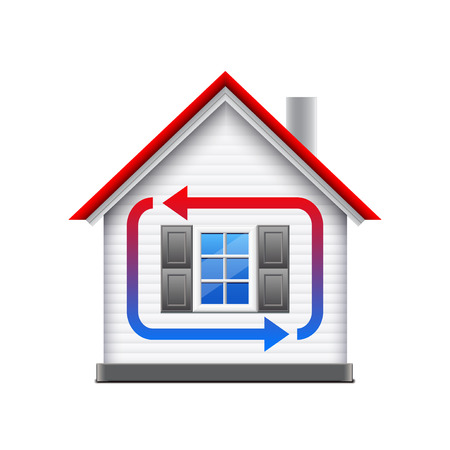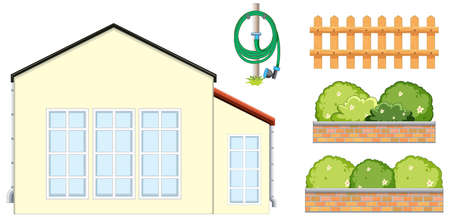1. Install Water-Efficient Fixtures
One of the easiest and most effective ways to start saving water and lowering your utility bills is by upgrading to water-efficient plumbing fixtures. These fixtures are designed to use less water without compromising on performance, making them a smart choice for any eco-conscious homeowner.
Low-Flow Toilets
Traditional toilets can use up to 6 gallons of water per flush, while modern low-flow models use as little as 1.28 gallons. This simple switch can save thousands of gallons of water each year.
Water-Saving Faucets
Faucets with aerators or low-flow features reduce the amount of water that comes out without affecting pressure. These are perfect for kitchens and bathrooms where hand washing and food prep happen daily.
Efficient Showerheads
Low-flow showerheads use about 2 gallons of water per minute or less, compared to standard ones that may use over 2.5 gallons. You’ll still enjoy a full, satisfying shower while using significantly less water.
Comparison Table: Traditional vs. Water-Efficient Fixtures
| Fixture Type | Standard Water Usage | Water-Efficient Usage | Estimated Annual Savings* |
|---|---|---|---|
| Toilet | 6 GPF (gallons per flush) | 1.28 GPF | Up to 13,000 gallons/year |
| Faucet | 2.2 GPM (gallons per minute) | 1.5 GPM or less | 700–1,400 gallons/year |
| Showerhead | 2.5 GPM | 2.0 GPM or less | Up to 2,900 gallons/year |
| *Savings estimates based on average family usage per household annually. | |||
Pro Tip:
If youre unsure whether your current fixtures are water-efficient, look for the WaterSense label—a certification from the EPA that guarantees efficiency and performance standards.
2. Fix Leaks Promptly
Leaks might seem minor at first, but even a small drip can waste gallons of water each day and lead to higher utility bills. Addressing leaks as soon as you notice them is one of the simplest and most effective green plumbing practices you can adopt.
Common Household Leaks to Watch For
Two of the most frequent sources of water waste in homes are dripping faucets and running toilets. These issues are often easy to overlook, but they can add up quickly in terms of both environmental impact and cost.
| Leak Type | Potential Water Waste | Estimated Monthly Cost Increase |
|---|---|---|
| Dripping Faucet (1 drip/sec) | Over 3,000 gallons/year | $10–$20 |
| Running Toilet | Up to 200 gallons/day | $70 or more |
Easy Fixes for Common Leaks
- Faucets: Replace worn-out washers or cartridges. Most home improvement stores carry inexpensive repair kits that make this an easy DIY project.
- Toilets: Check the flapper valve inside the tank. If it’s worn or not sealing properly, replace it with a new one—usually under $10 and takes just a few minutes to install.
When to Call a Professional
If youre dealing with persistent leaks or plumbing fixtures that are difficult to access, dont hesitate to call a licensed plumber. A professional can quickly identify the issue and ensure its fixed correctly, saving you time, water, and money in the long run.
Pro Tip:
Add leak checks to your seasonal home maintenance routine. Catching problems early means fewer surprises on your water bill and less strain on local water resources.

3. Use Energy-Efficient Water Heaters
Choosing the right water heater can make a big difference in your homes energy and water usage. Traditional water heaters store hot water in a tank, which means they continuously use energy to keep the water warm — even when youre not using it. Upgrading to an energy-efficient model helps reduce this waste and can save you money over time.
Tankless Water Heaters
Tankless, or on-demand, water heaters heat water only when you need it. This means theres no standby energy loss from maintaining a tank full of hot water. Theyre compact, long-lasting, and ideal for households looking to lower their utility bills and environmental impact.
Benefits of Tankless Water Heaters:
- Heat water only when needed
- Use less energy compared to traditional models
- Save space due to compact design
- Last longer — typically 20+ years with proper maintenance
ENERGY STAR® Certified Water Heaters
Another great option is choosing a water heater with the ENERGY STAR® label. These models meet strict energy efficiency guidelines set by the U.S. Environmental Protection Agency. They come in various types, including tankless, high-efficiency storage, and heat pump models.
Comparison Table: Traditional vs. Energy-Efficient Water Heaters
| Feature | Traditional Tank Heater | Tankless / ENERGY STAR® Heater |
|---|---|---|
| Energy Usage | High (constant heating) | Low (on-demand heating) |
| Lifespan | 10–15 years | 20+ years |
| Space Required | Larger footprint | Compact size |
| Savings Over Time | Lower initial cost but higher bills | Higher upfront cost but lower bills |
Quick Tip:
If youre not ready to switch systems entirely, consider adding insulation to your current water heater and hot water pipes — its a simple upgrade that can reduce heat loss and improve efficiency.
4. Insulate Your Pipes
If youre looking to make your home more energy-efficient and eco-friendly, pipe insulation is a simple but powerful upgrade. By insulating your exposed plumbing—especially in basements, garages, or crawl spaces—you can help keep water hotter for longer and reduce the time it takes for hot water to reach your faucet. This means less water wasted while waiting and lower energy bills over time.
Why Pipe Insulation Matters
Hot water loses heat as it travels through uninsulated pipes, especially during colder months. When your pipes are insulated, the water stays warm longer, which means your water heater doesnt have to work as hard. This not only conserves energy but also extends the life of your water heater.
Benefits of Pipe Insulation
| Benefit | Description |
|---|---|
| Water Conservation | Hot water reaches taps faster, reducing the amount of cold water wasted while waiting. |
| Energy Savings | Less heat loss means your water heater uses less energy to maintain temperature. |
| Lower Utility Bills | Saves money on both water and energy usage over time. |
| Prevents Frozen Pipes | In cold climates, insulation helps protect pipes from freezing and bursting. |
Where to Insulate
You don’t need to insulate every inch of piping in your home. Focus on areas where heat loss is most likely:
- Pipes located in unheated spaces like basements, attics, garages, and crawlspaces
- Pipes connected directly to your water heater
- Pipes near exterior walls that may get colder in winter months
Materials You Can Use
You can find pipe insulation materials at most hardware stores. Some popular types include:
- Foam Tubing: Easy to install and commonly used for residential plumbing.
- Fiberglass Wrap: Great for high-temperature pipes but may require protective covering.
- Tape Insulation: Ideal for small sections or joints where tubing won’t fit.
5. Practice Smart Water Habits
One of the easiest and most effective ways to conserve water and reduce your utility bills is by adopting smart water habits in your daily routine. These small changes might seem simple, but over time they can make a big difference—for both the environment and your wallet.
Simple Habits That Save Water
Everyday actions, when done mindfully, can significantly cut down on water waste. Here are a few habits to start practicing:
- Turn off the tap while brushing your teeth: This can save up to 8 gallons of water per day per person.
- Run full loads only: Whether its your dishwasher or washing machine, always wait until you have a full load before running it. This maximizes water efficiency.
- Fix leaks quickly: A dripping faucet or leaking toilet can waste hundreds of gallons each month.
- Limit shower time: Try keeping showers under 5 minutes to save both water and energy used for heating.
Water-Saving Habit Comparison
| Habit | Water Saved (Approx.) |
|---|---|
| Turning off tap while brushing teeth | Up to 8 gallons/day |
| Running full dishwasher loads | Up to 15 gallons/load |
| Running full laundry loads | Up to 30 gallons/load |
| Fixing leaks promptly | Hundreds of gallons/month |
Create a Routine That Works for You
You don’t need to overhaul your entire lifestyle overnight. Start with one or two new habits and build from there. Encourage everyone in your household to participate—even small efforts by each family member add up quickly.
The key is consistency. Once these water-saving practices become second nature, you’ll notice lower utility bills and feel good knowing youre helping conserve a vital natural resource.
6. Consider a Greywater Recycling System
Installing a greywater recycling system is a smart and eco-friendly way to conserve water and reduce your monthly utility bills. Greywater is gently used water from sources like bathroom sinks, showers, bathtubs, and washing machines. Instead of sending this water down the drain, you can reuse it for non-potable purposes such as watering your garden or flushing toilets.
How Does a Greywater System Work?
A greywater system collects wastewater from approved sources, filters out debris and soap residue, and then stores or redirects the treated water for outdoor or secondary indoor use. It’s important to note that greywater is not suitable for drinking or cooking, but it’s perfectly safe for irrigation when handled properly.
Benefits of Using Greywater
| Benefit | Description |
|---|---|
| Water Conservation | Reduces freshwater usage by reusing household water. |
| Lower Utility Bills | Lowers both water and sewage costs over time. |
| Sustainable Landscaping | Provides an eco-friendly solution for watering lawns and gardens. |
| Environmental Impact | Lowers demand on municipal water systems and reduces strain on local ecosystems. |
Is It Legal in My Area?
Greywater regulations vary across different states and municipalities in the U.S. Before installing a system, check with your local building department or environmental agency to ensure compliance with codes and permits. Some areas may require professional installation or specific filtration standards.
Types of Greywater Systems
- Simple Diversion Systems: Direct greywater to landscape areas through pipes without storage tanks. Best for DIYers with small gardens.
- Pump Systems: Include a pump to move greywater uphill or to larger distances, offering more flexibility in landscaping design.
- Treatment Systems: Filter and treat greywater before reuse, making them suitable for more complex setups including toilet flushing.
Quick Tip:
Avoid using harsh chemicals or bleach in areas where greywater will be collected. Opt for biodegradable soaps and detergents that are safe for plants and soil health.


